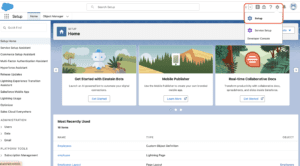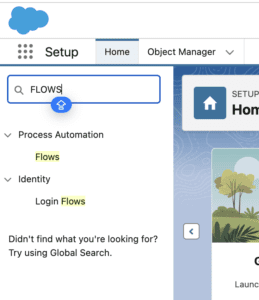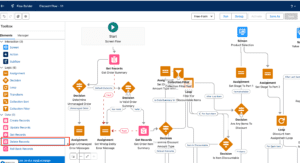In our previous blog post we had discussed about How to Get Records in Salesforce Flow. In these blog post we discuss about How to Delete Records in Salesforce Flow
Contents
- 0.1 How to Delete Records in Salesforce Flow
- 0.2 How to Delete Records in Salesforce Flow
- 0.3 Overview of Salesforce Flow
- 0.4 Types of Salesforce Flows
- 0.5 Components of Salesforce Flow
- 0.6 User Permissions
- 0.7 Understanding Record Relationships
- 0.8 Flow Configuration
- 0.9 Creating a New Flow
- 1 Conclusion
- 2 FAQs
How to Delete Records in Salesforce Flow
How to Delete Records in Salesforce Flow
Introduction
When managing data within Salesforce, the ability to delete records efficiently is crucial. Salesforce Flow provides a robust toolset for automating various processes, including the deletion of records. Whether you’re cleaning up outdated information or automating data management tasks, understanding how to effectively use Salesforce Flow to delete records can streamline your workflows and ensure data accuracy.
Understanding Salesforce Flow
Overview of Salesforce Flow
Salesforce Flow is a powerful automation tool that allows users to create complex business processes without needing to write code. It provides a visual interface where you can design and automate workflows, including tasks like record creation, updates, and deletions. By leveraging flows, organizations can enhance operational efficiency and reduce manual intervention.
Types of Salesforce Flows
- Screen Flows: These flows are user-driven and interact with users through screens. They are typically used to guide users through a series of steps, such as data entry or record updates.
- Autolaunched Flows: These flows run automatically without user interaction. They are often used for background processes, such as record updates or deletions triggered by other events or scheduled actions.
Components of Salesforce Flow
Salesforce Flow consists of various elements like screens, actions, decisions, and assignments. Each component plays a role in defining how the flow operates and what actions it performs. For record deletion, the primary component you will work with is the Delete Records element.
User Permissions
Before setting up a flow to delete records, ensure that the user or system has the necessary permissions. Deleting records requires specific permissions, such as “Modify All Data” or “Delete” access on the relevant objects.
Understanding Record Relationships
When planning to delete records, it’s essential to understand the relationships between records. Salesforce uses parent-child and sibling relationships to link records, and deleting a record can affect related records. Be cautious to avoid unintended data loss.
Flow Configuration
Ensure that your flow is properly configured to handle record deletions. This includes setting up variables, conditions, and error handling to manage the deletion process smoothly.
How to Delete Records Using Salesforce Flow
Creating a New Flow
Login to Salesforce Account

Click Gear icon Navigation to Salesforce Setup

Search Quick Find box in Flows

Open Existing Flow

Add Element for Delete Records

Fill details

Save Flow
Testing Your Flow
Debugging Techniques
- Use the built-in debug tools in Flow Builder to test your flow.
- Review debug logs to identify and fix any issues or unexpected behaviors.
Common Issues and Solutions
- Issue: Records not being deleted as expected. Solution: Verify the criteria and ensure that the correct record IDs are being passed to the Delete Records element.
- Issue: Flow errors or failures. Solution: Check for permission issues, missing variables, or incorrect flow configurations.
Best Practices for Record Deletion in Flows
Implementing Error Handling
- Incorporate fault paths and error handling elements in your flow to manage potential errors during record deletion.
- Set up notifications or logging to track and address any issues that arise.
Ensuring Data Integrity
- Validate that records are being deleted as intended and that no critical data is lost.
- Consider using backup processes or archiving data before deletion.
Optimizing Flow Performance
- Optimize your flow to minimize performance impacts, especially when dealing with large volumes of records.
- Test and refine your flow to ensure efficient operation and minimal disruptions.
Use Cases for Record Deletion in Salesforce Flow
Automated Record Cleanup
- Set up flows to automatically delete old or obsolete records based on specific criteria, such as age or status.
- Schedule flows to run at regular intervals to keep your data clean and up-to-date.
Conditional Record Deletion
- Use decision elements to conditionally delete records based on dynamic criteria or user input.
- Customize flows to handle various scenarios and ensure appropriate records are deleted.
Mass Record Deletion
- Design flows to handle bulk deletions efficiently, especially when dealing with large datasets.
- Implement batch processing or other strategies to manage performance and avoid hitting governor limits.
Conclusion
Deleting records in Salesforce Flow can greatly enhance data management and operational efficiency. By understanding how to set up and configure flows for record deletion, you can automate complex processes and maintain clean, accurate data. Always test and validate your flows to ensure they meet your requirements and follow best practices to avoid potential issues.
We Want to More About How to Delete Records in Salesforce Flow Click Here
FAQs
What is the difference between Screen Flows and Autolaunched Flows?
Screen Flows involve user interaction through screens, while Autolaunched Flows run automatically in the background without user input.
Can I delete related records using Salesforce Flow?
Yes, you can delete related records by using the appropriate criteria and configurations within the flow. Be cautious of the impact on parent or child records.
How can I recover deleted records in Salesforce?
Deleted records can be recovered from the Recycle Bin within Salesforce for a limited time. For more permanent solutions, consider implementing backup and recovery strategies.
What are the common mistakes to avoid when setting up record deletion?
Common mistakes include incorrect criteria configuration, lacking permissions, and failing to account for related records. Ensure thorough testing and validation to avoid these issues.
How can I monitor the performance of my Salesforce Flow?
Use Salesforce’s monitoring tools and debug features to track the performance of your flow. Regularly review logs and performance metrics to optimize and maintain efficiency.
In our next blog post we will discuss about How to Roll Back Record in Salesforce Flow

2 thoughts on “How to Delete Records in Salesforce Flow”